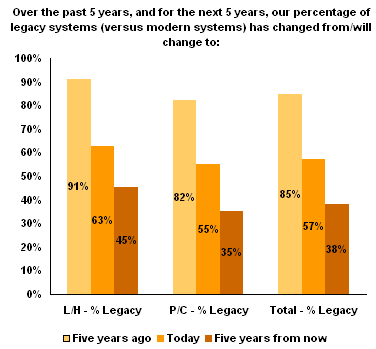Legacy and Mainframe Migration: An Insurance Imperative
Abstract
Insurance carriers have struggled to meet modern demands with legacy systems for over a decade. However, replacing those legacy systems is still a second choice to wrap-and-extend strategies.
In a new report, , Celent examines the challenges of using legacy systems, how carriers have addressed them, and carriers' plans for dealing with legacy systems in the future.

The report examines migration to modern systems from both legacy hardware and software and the new technologies that have made it easier than ever to migrate to modern systems including: service-oriented architecture, Web services, EAI, BRE/BPM, legacy migration tools, virtualization/grid/utility computing, and 64-bit or dual core commodity hardware.
However, some of these same technologies are making it easier to revitalize legacy systems, further slowing the pace of change in the industry. SOA, Web services, and other technologies are making it increasingly more plausible to extend legacy applications yet again.
"Wrapping and extending legacy systems is not a strategy that's going to become unpopular anytime soon," said Chad Hersh, a senior analyst in Celent's insurance practice and author of the report. "What carriers need to realize is that to some extent they're mortgaging their futures by using technologies that carry a higher total cost of ownership in the long term."
The report includes survey data from 39 carriers that cover a range of topics regarding legacy usage and strategies.
The 29-page report contains 1 table and 11 figures.
A table of contents is available online.

